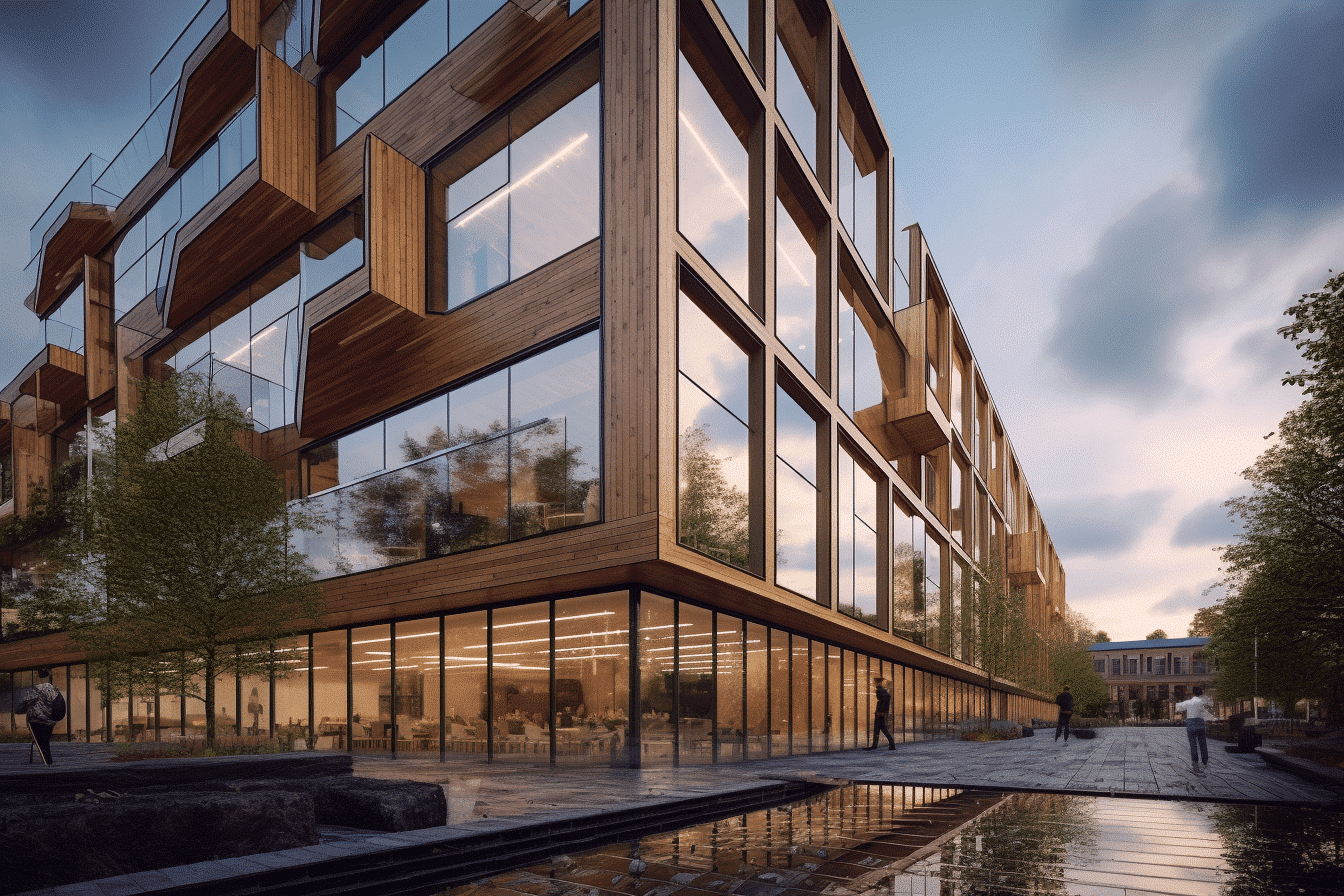Recent architectural trends have seen wooden structures reach remarkable dimensions, with timber skyscrapers emerging in nations like Norway, Switzerland, and Australia. In this lineup, Singapore boasts Asia’s grandest wooden structure, a 468,000-square-foot educational campus inaugurated in May.
However, the property development giant, Atrium Ljungberg, is now poised to craft the planet’s most expansive “wooden city” in Stockholm, Sweden, with a projected start in 2025.
This mammoth venture, termed Stockholm Wood City, will accommodate 7,000 offices and 2,000 residential units in southeast Stockholm. As per the project’s announcement, it promises a dynamic urban expanse complete with offices, residences, eateries, and shopping centers. Spanning over 2.7 million square feet (or 250,000 square meters), Atrium Ljungberg lauds it as the “greatest wooden construction endeavour globally.”
Sickla, the selected location for this project, currently hosts over 400 businesses. Atrium Ljungberg, the landowner of a retail section in this once-industrial area, portrays Sickla as a “five-minute city,” emphasizing the proximity of facilities and amenities.
Wood’s resurgence in architecture is primarily due to its sustainable advantages over traditional construction materials like concrete and steel. Annica Ånäs, Atrium Ljungberg’s CEO, remarked that such a colossal mixed-use wooden development is a “historic leap in Swedish inventive prowess.”
While wooden structures’ fire susceptibility remains a concern for some experts, proponents emphasize engineered timber’s slow and consistent burn rate, which they claim is comparatively safer than many regular steel edifices.
Additionally, timber serves as a “carbon reservoir,” implying the carbon dioxide trees absorb is retained within the timber, preventing its release back into the environment. A research piece from 2022 in the journal Nature noted that by 2100 if 90% of the urban population’s housing was catered to by mid-rise wooden structures, there would be a 106 gigaton reduction in CO2 emissions.
However, this significant shift demands sustainable timber production to prevent deforestation. Given that nearly 70% of Sweden is forested, the nation seems aptly suited for such wooden innovations.
Given the substantial carbon footprint of the real estate sector, which accounts for almost 40% of global emissions as per McKinsey, Atrium Ljungberg aims to pioneer an innovative path for its peers.
“We have a profound impact, and our mission is to instigate both immediate and enduring positive change,” mentioned Ånäs.
The inaugural buildings of Stockholm Wood City, envisioned by architectural powerhouses White Arkitekter and Henning Larsen, are anticipated to be ready by 2027.
The ambitious Stockholm Wood City project not only exemplifies the possibilities of sustainable construction but also sets a precedent for urban development worldwide. As countries grapple with the urgency of climate change, turning to renewable resources like timber for large-scale construction projects could pave the way for a greener, more sustainable future. This Swedish endeavour serves as a beacon, illuminating the potential of marrying innovation with sustainability in modern-day urban landscapes.

